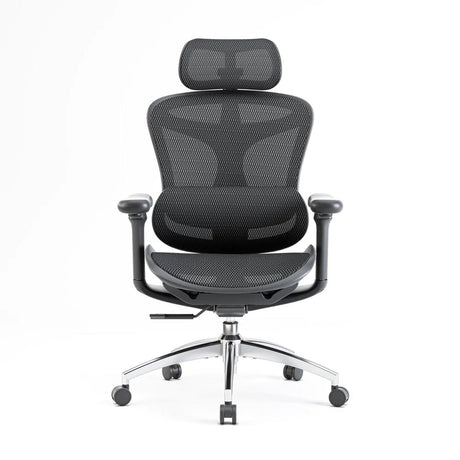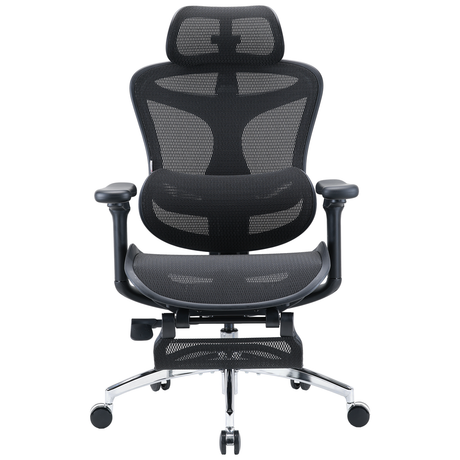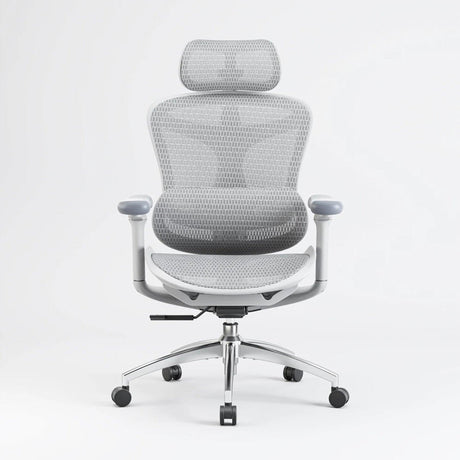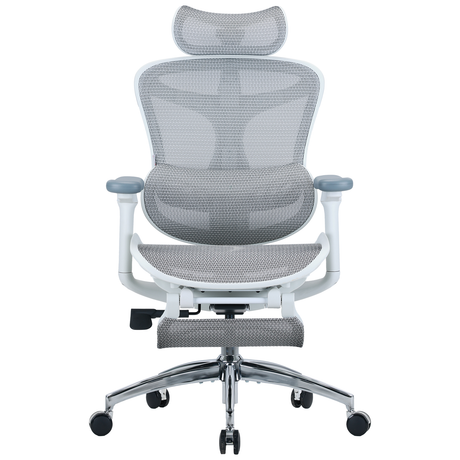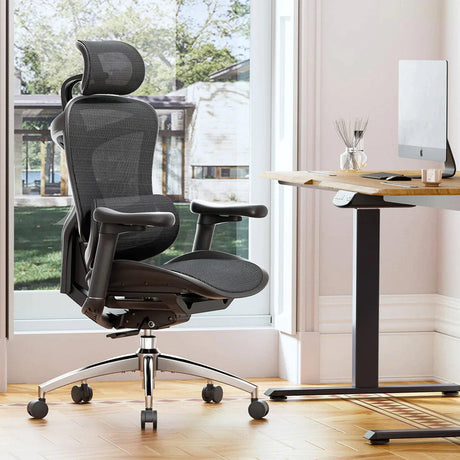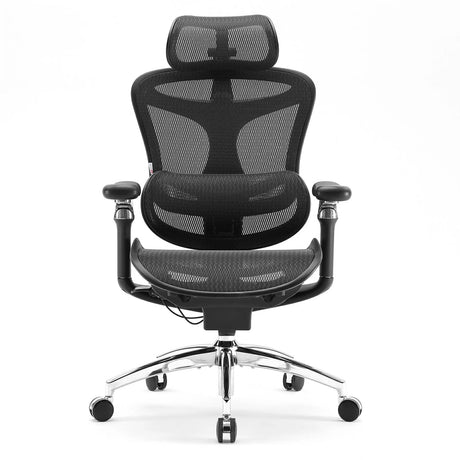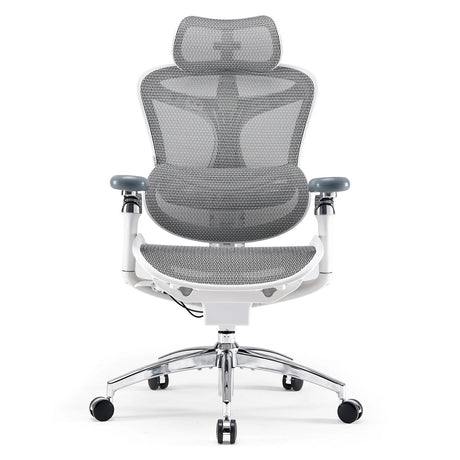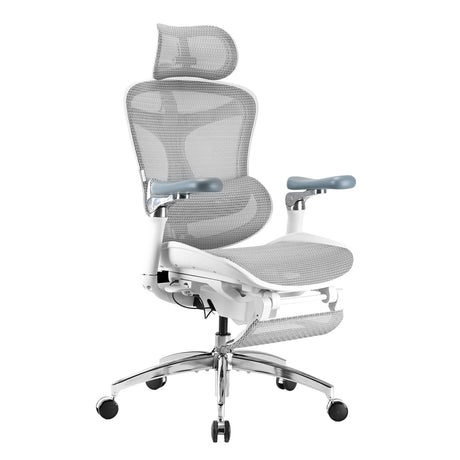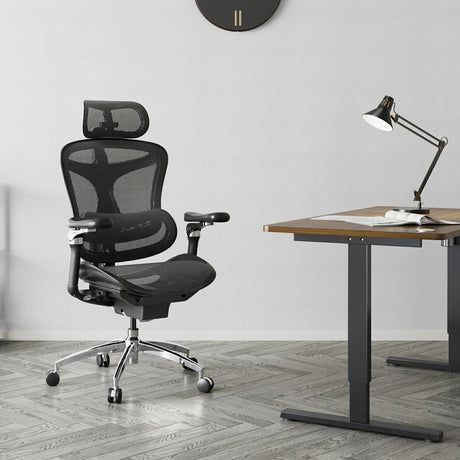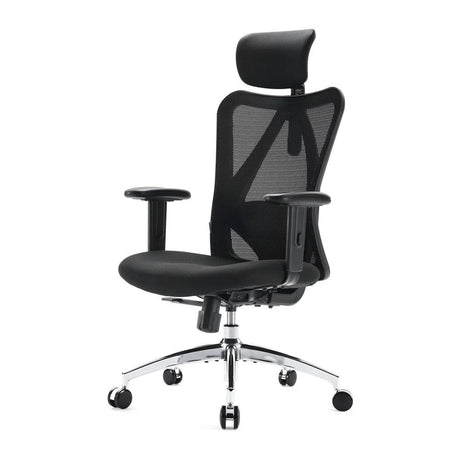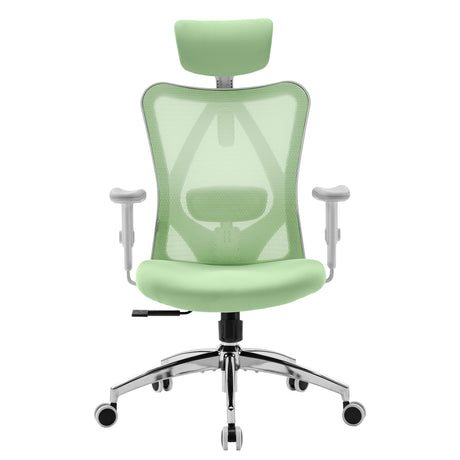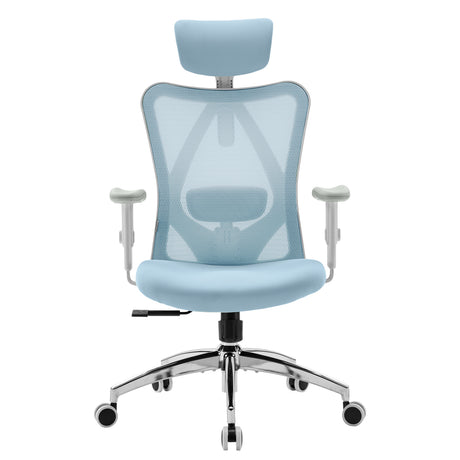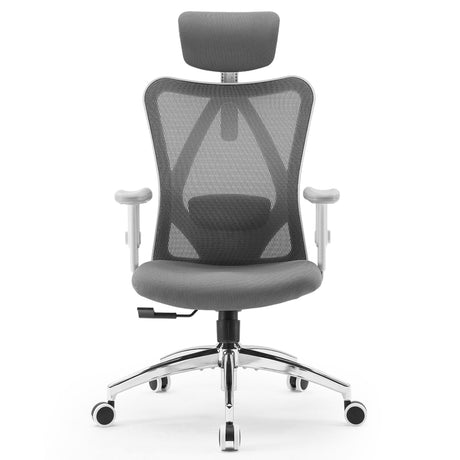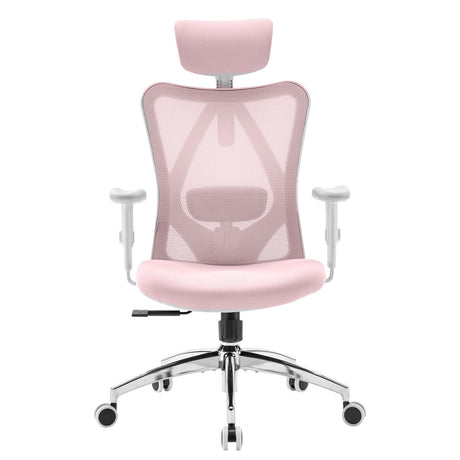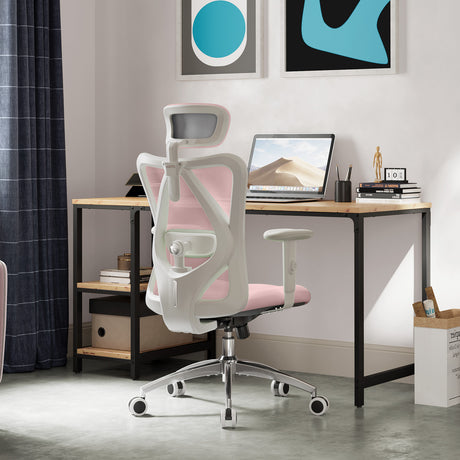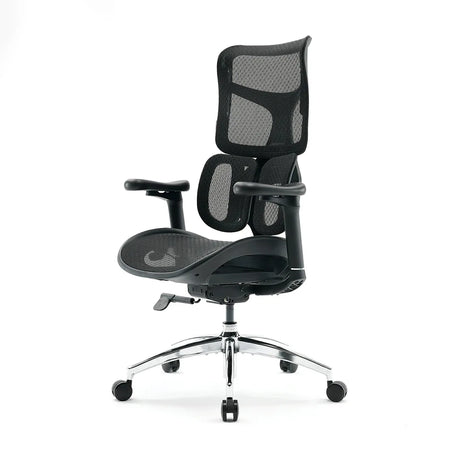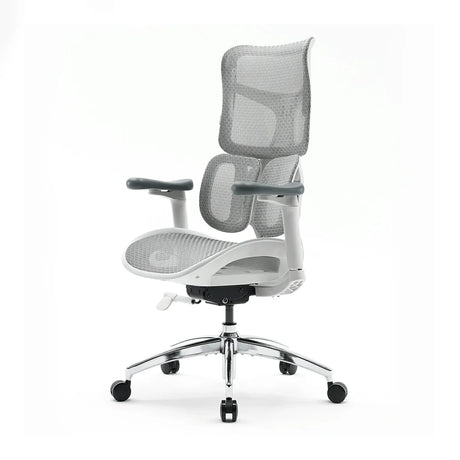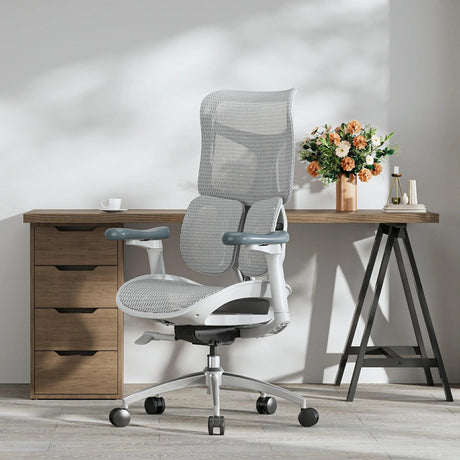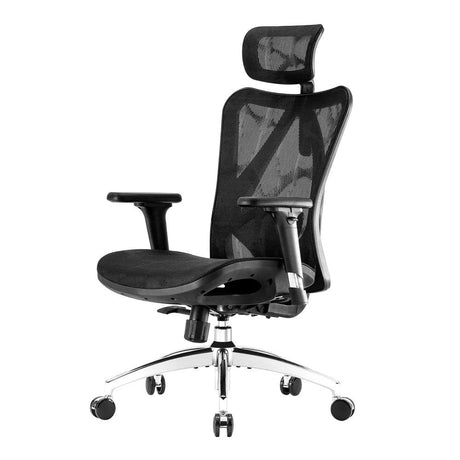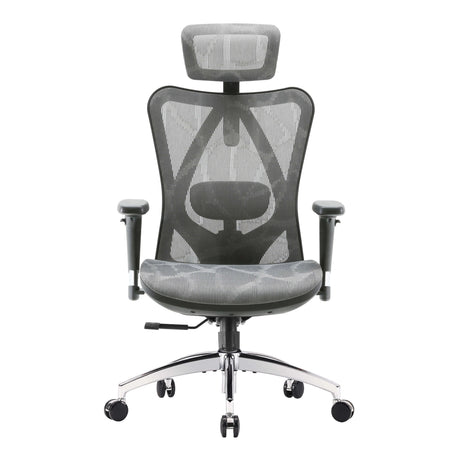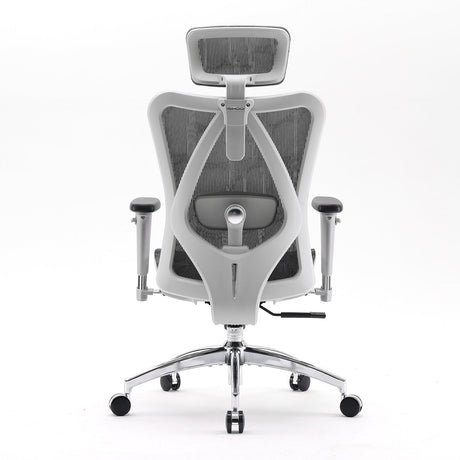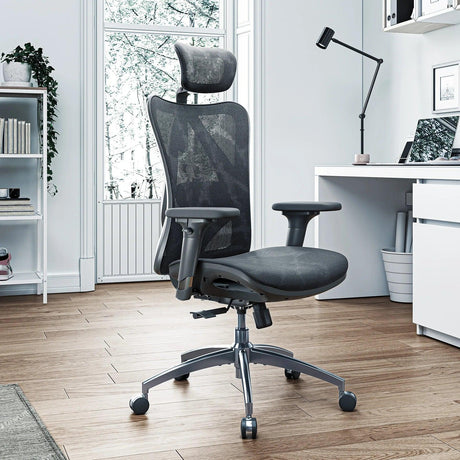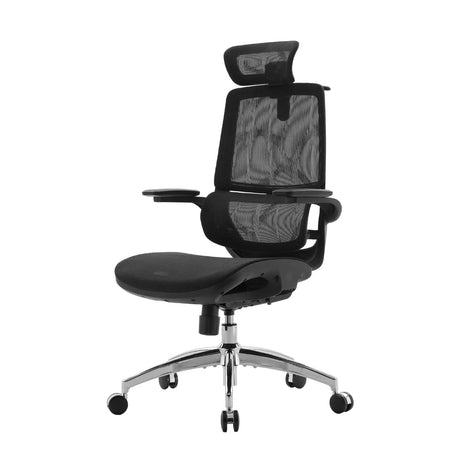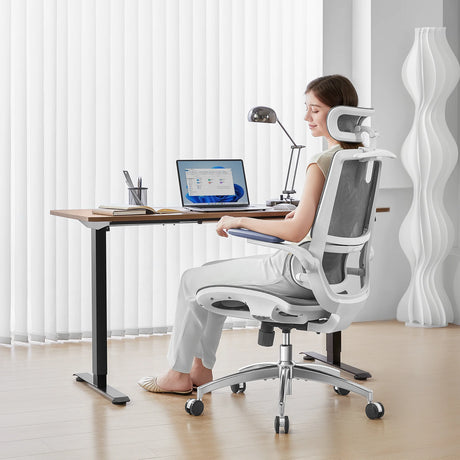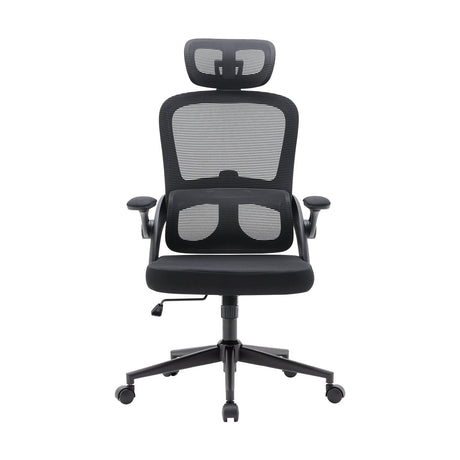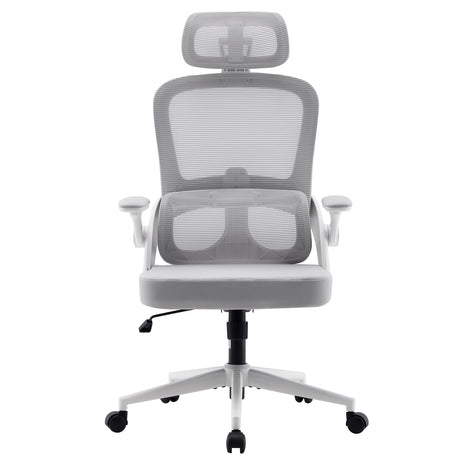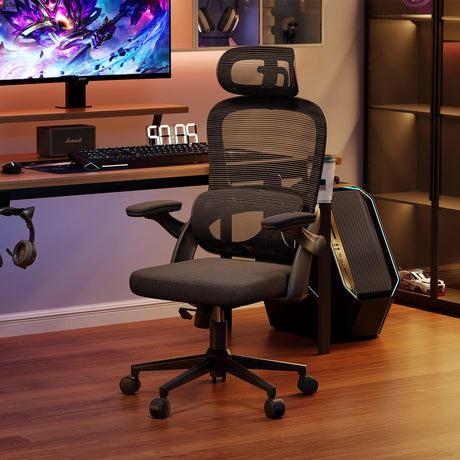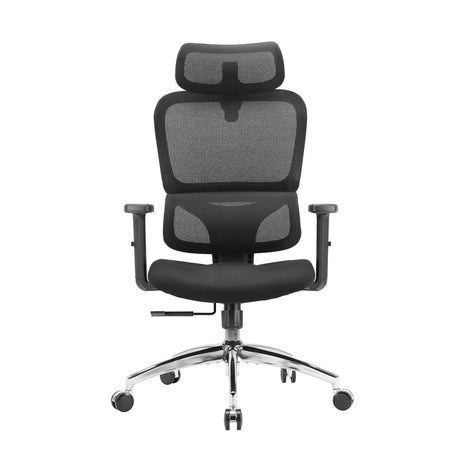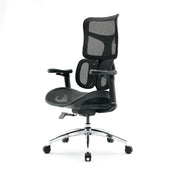If you’re like most office workers, you probably spend anywhere between six to ten hours sitting every day. You might have even invested in a high-quality ergonomic chair, hoping it would solve your back pain or stiffness. But here’s the truth: even the best office chair can’t help if you don’t adjust it correctly.
Most people sit in chairs that are technically ergonomic — but misused. Maybe your chair is too low, the lumbar support is in the wrong position, or the armrests are either too wide or too high. These subtle mistakes, repeated over days and months, can gradually lead to muscle tension, fatigue, and even chronic back or neck pain.
In this guide, we’ll dive deep into the most common office chair adjustment mistakes people make — and, more importantly, how to fix them. Whether you use a premium model like the Sihoo Doro S300 or a basic task chair, these tips will help you get the most out of your setup and your workday.
1. Sitting Too Low (or Too High)
The Mistake
One of the most common errors people make is setting their chair height based on how it “feels” rather than how it should align with their desk and body. Sitting too low can cause your shoulders to hunch and your wrists to angle upward, straining both muscles and tendons. Sitting too high, on the other hand, can make your feet dangle — reducing circulation and increasing pressure under your thighs.
How to Fix It
Adjust your seat height so that:
- Your feet rest flat on the floor, not just your toes.
- Your knees are at or slightly below hip level.
- Your elbows form a 90–100° angle when resting on the desk or armrests.
If your desk is non-adjustable and too high for proper alignment, use a footrest to maintain full foot support. Many ergonomic chairs, such as those in the Sihoo Doro Series, come with generous seat height ranges to accommodate various body sizes and desk setups.
2. Ignoring Lumbar Support Placement
The Mistake
You might have an adjustable lumbar support, but are you sure it’s in the right spot? Too high, and it pushes your mid-back uncomfortably forward. Too low, and it does nothing to support your natural lumbar curve — effectively negating the point of having one at all.
How to Fix It
Your lumbar support should fit snugly into the small of your back, roughly aligned with your belt line. You should feel gentle, consistent pressure supporting your lower spine’s natural curve.
If your chair’s lumbar support is adjustable, experiment with small changes until you feel the right balance between comfort and support — not too hard, not too soft.
For instance, models like the Sihoo Doro C300 and Sihoo Doro S100 use dynamic lumbar systems that automatically adapt to your posture, making it easier to maintain this ideal support even when you move or lean back.
3. Overlooking Seat Depth
The Mistake
Seat depth is one of the most misunderstood adjustments. Sit too far back, and the front edge of your seat can cut off circulation behind your knees. Sit too far forward, and you lose critical back support.
How to Fix It
When sitting all the way back in your chair, check for two to three fingers of space between the back of your knees and the seat edge. That small gap allows proper blood flow while ensuring your lower back stays in contact with the lumbar support.
If your chair has seat depth adjustment, use it. Chairs like the Sihoo Doro C300 Pro allow you to slide the seat pan forward or backward for a perfect fit.
4. Forgetting to Adjust the Armrests (or Removing Them Entirely)
The Mistake
Many people either ignore their armrests completely or remove them because they feel restrictive. But when adjusted correctly, armrests can relieve pressure on your shoulders and neck. When adjusted poorly, though, they can create tension instead.
How to Fix It
Your armrests should:
- Support your elbows lightly while your shoulders remain relaxed and level.
- Sit at roughly desk height, allowing your forearms to rest at a 90° angle.
- Be close enough to your body to keep your elbows under your shoulders — not flared out to the sides.
If your chair includes 4D or 6D armrests, like those found in advanced ergonomic models, adjust the height, width, depth, and angle until your arms feel naturally supported. Remember, they should follow your posture, not force you into one.
5. Locking the Backrest Upright All Day
The Mistake
Some people think locking the backrest upright promotes better posture. In reality, sitting rigidly for hours is one of the worst things you can do for your spine. Movement — even small reclining motions — helps keep spinal discs nourished and reduces pressure buildup.
How to Fix It
Unlock your recline mechanism and adjust the tension so the backrest moves with you, providing support throughout your range of motion. Ideally, you should recline periodically throughout the day between 90° and 120°, depending on your activity.
For example, the Sihoo Doro S300’s Anti-Gravity Mechanism provides a weightless recline experience that keeps your back fully supported at any angle — a perfect solution for long working sessions.
6. Ignoring Headrest Position
The Mistake
Headrests are often either unused or misaligned. Too high, and they push your head forward. Too low, and they dig into your neck. Both positions can cause discomfort and strain over time.
How to Fix It
Adjust the headrest so that it supports the middle of your head or upper neck, allowing your head to lean back comfortably without tilting forward. You should be able to rest against it while maintaining a neutral, upright posture.
If you spend hours reading, coding, or reviewing documents, a properly adjusted headrest can significantly reduce neck tension.
7. Using the Wrong Recline Angle for Tasks
The Mistake
Your recline angle should match your activity. For example, sitting bolt upright while typing or leaning too far back during focused work can both lead to strain.
How to Fix It
- Typing/Computer Work: Slight recline of 90–100°
- Reading/Meetings: Recline between 100–110°
- Relaxing/Thinking: Recline up to 120–130°
The goal is to stay supported at every angle, keeping your spine aligned and muscles relaxed. If your chair has a synchro-tilt mechanism, it will automatically adjust seat and back angles to maintain ergonomic balance as you recline.
8. Sitting on the Edge of the Seat
The Mistake
It’s common to slide forward and perch on the seat edge when focused or stressed. But this posture shifts your body weight away from the backrest and lumbar support, forcing your spine into an unsupported “C” shape.
How to Fix It
Sit all the way back into your chair and let the backrest support you. If your chair’s backrest feels uncomfortable, adjust its tension or lumbar placement rather than avoiding it. You should feel stable, balanced, and naturally upright without excessive effort.
9. Not Adjusting for Task Variability
The Mistake
Many users adjust their chair once and never touch it again. But your needs change throughout the day — from typing to writing, from meetings to breaks. Keeping your chair static is like wearing the same pair of shoes for running, lounging, and hiking.
How to Fix It
Make small adjustments during your day:
- Raise or lower the seat slightly when switching from typing to reading.
- Recline during calls or brainstorming sessions.
- Move the armrests outward when writing or using wide keyboards.
Your chair is designed to move with you — use that versatility to your advantage.
10. Neglecting Seat Cushion Support
The Mistake
Over time, even high-quality seat cushions can lose firmness, leading to pressure points or hip discomfort. Some people continue using a worn-out cushion long after it stops providing adequate support.
How to Fix It
Check your seat cushion periodically. If it feels flat or uneven, consider replacing it or adding a breathable seat pad for additional support. Premium ergonomic chairs use high-density foam or elastic mesh that maintains shape and airflow over time.
11. Not Using the Backrest Tilt Tension Control
The Mistake
Backrest tension often goes untouched, yet it’s crucial for balancing comfort and support. If it’s too tight, you’ll struggle to recline; too loose, and you’ll fall backward with little resistance.
How to Fix It
Adjust the tilt tension knob under your seat until the recline feels smooth and controlled. You should be able to lean back comfortably without losing support or stability.
Some advanced chairs, such as the Sihoo Doro S100, automatically sense and adapt to your weight, ensuring balanced recline tension with no manual tweaking required.
12. Ignoring Micro-Movements
The Mistake
Even if your chair is perfectly adjusted, sitting still for too long is harmful. Our bodies are designed to move. Lack of movement reduces circulation, tightens muscles, and decreases focus.
How to Fix It
Incorporate small, regular movements:
- Shift your weight slightly every few minutes.
- Lean forward and back periodically.
- Stretch your arms, roll your shoulders, or do light seated twists.
Pairing your ergonomic chair with a standing desk can also encourage natural movement throughout your workday.
13. Disregarding Your Desk Setup
The Mistake
Your chair adjustments can’t compensate for a poorly set-up desk. If your monitor is too high or too low, or your keyboard is too far away, you’ll still end up straining your neck and shoulders.
How to Fix It
Make sure your entire workstation works in harmony:
- Monitor height: Top of the screen should be at or just below eye level.
- Monitor distance: About an arm’s length away.
- Keyboard and mouse: Within easy reach without stretching.
Once your desk setup matches your chair ergonomics, your posture will naturally align, and discomfort will diminish dramatically.
14. Ignoring Your Body’s Feedback
The Mistake
Perhaps the biggest mistake of all is ignoring discomfort. Pain, stiffness, or fatigue are signals that something’s off — and not just part of “getting older” or “working long hours.”
How to Fix It
Listen to your body. If your lower back hurts after two hours, recheck your lumbar support or seat depth. If your shoulders ache, look at your armrest height. Continuous discomfort means your setup still needs fine-tuning.
Over time, these small corrections will pay off in better posture, higher energy, and greater long-term comfort.
The Payoff: Why Proper Chair Adjustment Is a Game Changer
When you sit correctly, you don’t just feel better — you work better. Proper chair adjustments can:
- Reduce muscle tension and fatigue
- Improve circulation and focus
- Prevent long-term back and neck problems
- Increase productivity and comfort
It’s an investment in your well-being that pays daily dividends.
Pro Tips for Perfecting Your Setup
- Start from the ground up: Adjust your seat height and foot placement first, then move upward to backrest, armrests, and headrest.
- Use mirrors or camera checks: Sometimes you can’t feel poor posture — seeing yourself helps identify slouching or leaning.
- Reassess regularly: As you change shoes, desk height, or even your monitor setup, your chair settings may need readjustment.
FAQs: Office Chair Adjustments
1. How often should I adjust my chair?
At least once every few months — or whenever you change desks, shoes, or flooring. You should also make small adjustments daily depending on your activity.
2. Should my feet be flat on the floor?
Yes. Always ensure full foot contact with the floor or a footrest. This maintains proper leg support and reduces circulation issues.
3. What’s the ideal recline angle for working?
For computer work, stay around 100°. For relaxation or reading, you can recline up to 120–130° as long as your chair supports your back fully.
4. Is it bad to lean forward sometimes?
Occasional leaning is fine, especially for short tasks like signing documents. Just don’t stay in that posture for long — your back needs consistent support.
5. Do I really need armrests?
Yes. Armrests reduce strain on your shoulders and upper back, provided they’re adjusted to the right height and distance.
6. Can I adjust my chair for different activities?
Absolutely. You should! Typing, reading, or attending video calls all benefit from slightly different adjustments.
Conclusion: Your Chair Is Only as Good as Its Setup
A $1,000 ergonomic chair won’t do you any good if it’s adjusted incorrectly — and a modest $200 chair can perform surprisingly well when set up right. The difference between pain and comfort often lies not in the price tag, but in how you use what you have.
Take 10–15 minutes today to go through each adjustment step carefully. Feel your posture improve. Notice your body relax. Over time, these adjustments don’t just make your workday easier — they protect your long-term health.
Your chair isn’t just a seat; it’s your daily support system. Make it work for you, not against you.


